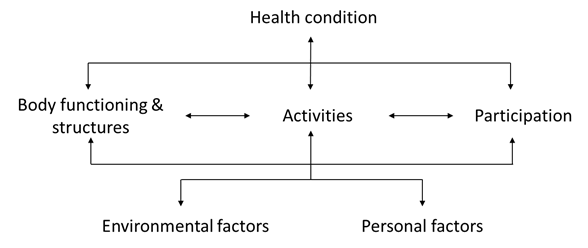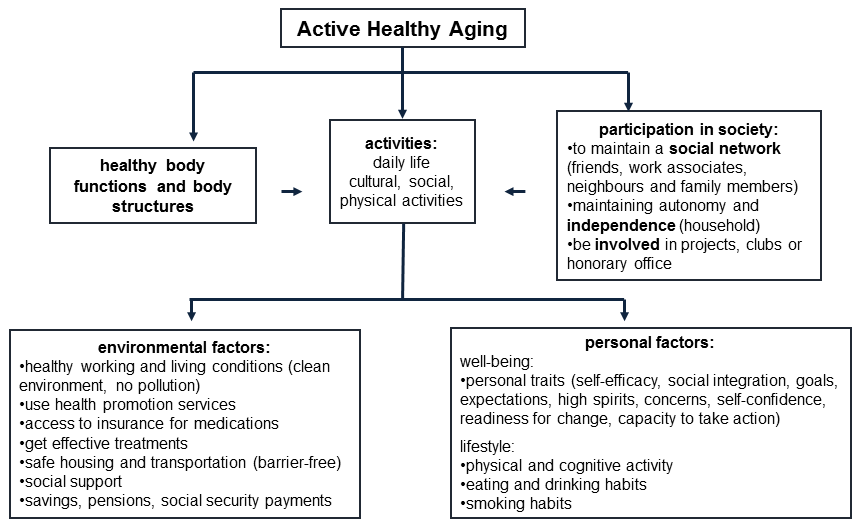The International Classification of Functioning (ICF) is a classification of health and health-related domains. It describes in a standardized language a person‘s functioning with its coherent disabilities, social factors and environmental factors (World Health Organization, 2005, p.11).
The health domains and the health-related domains are split in two aspects:
1. body functions and body structures (physiological and psychological functions, anatomy and organs)
2. activities and participation (be involved in different life situations)
In the ICF model, environmental factors are considered in addition to the health and health-related domains, which are interacting with one another. The functioning of a person can thus be valued including the person’s individual situation.
The interacting environmental factors are split in the following aspects:
1. environmental auditing factors (material and social)
2. personal factors (personality traits)
Following the ICF model, functioning is a generic term for all healthy body functions and body structures, no restricted activity and participation in all areas of life. In contrast, disability is a generic term for any harm of the functioning, restricted activity and restricted participation in any area of life (World Health Organization, 2005, p.13f.).
Source: World Health Organization. (2005). ICF – Internationale Klassifikation der Funktionsfähigkeit, Behinderung und Gesundheit. Retrieved from http://www.dimdi.de/dynamic/de/klassi/downloadcenter/icf/stand2005/icfbp2005.zip

Interactions of the ICF-components (modified from World Health Organization, 2005, p.23)
The general ICF model is systemic and is therefore not developed for linear processing such as the process of aging. Nevertheless we know that functional disability will increase with age and it is always related to contextual factors. The ICF model can here be used to acknowledge this relationship for successful changing aging into healthy active aging and Healthy Life Years (HLY).
Aging is influenced by the physical, social, and mental well-being, participation in society, protection, security and care. If people are able to be physically active and continuing participation in social, economic, cultural, spiritual, and civil affairs, it is active aging:„Active healthy ageing is the process of optimizing opportunities for health, participation and security in order to enhance quality of life as people age“ (World Health Organization, 2009).
As a result, health condition and aging are influenced by the persons themselves through active participation in society and taking advantage of preventive health measures. Additionally, aging is influenced through environmental factors such as living and working conditions.
Source: World Health Organization. (2009). Active Ageing: A Policy Framework. The Aging Male, 5(1), 1–37.
These influences are the already mentioned interactions in the ICF model and are summarized in the following image:

Interactions of the ICF-components for healthy aging (based on World Health Organization, 2009)
The personal factor is here the most powerful tool for making this change. While the ICF model contains this important personal factor, the ICF classification does not include codes for the personal factors. So working with empowerment with the citizens (giving the power back to the citizens) is fundamental for Active Healthy Aging, although it can’t be classified like the other components of the model.
